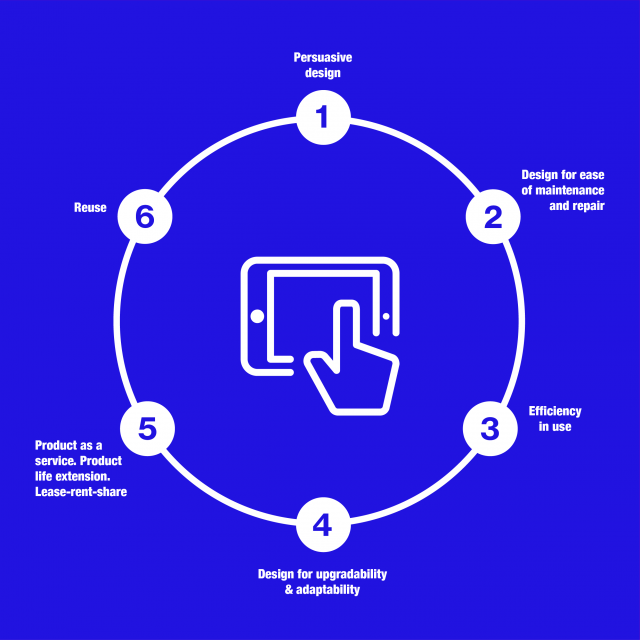Use
Design for ease of maintenance, reparability, upgradability and adaptability. Work for efficiency in use and maintainability as well as optimisation of initial lifetime. And re-use, do not forget about the second life!
User and environment friendly products: preserve and extend what is already made
- Persuasive design
Understand how you can increase people’s ability and motivation to behave sustainably. - Design for ease of maintenance and repair
Optimise the initial lifetime by offering extended-life products that are multifunctional, easy to maintain and repair. Optimising the function of products and ensure most suitable service life. - Efficiency in use
Design products that require fewer resources during operation. Energy-efficiency – a major source of environmental impact is the energy consumed by a product during its use. Ensure that products use fewer resources, cause less waste and pollution when they are used by end customers. - Design for upgradability and adaptability
Allow for future expansion and modification. Product life extension – keep the product alive and relevant (modernisation) and enable personalisation. - Product as a service: product life extension – lease – rent – share
Sharing platform, renting, swapping, collaborative consuming, cloud computing etc.
Product as a service – service-based business models. - Re-use
Second life, alternative use of the product, for example can an old phone work as a burglar alarm? Head for second-hand markets.
Learning Factory. Copyrights © 2017. Tapani Jokinen. Max Marwede.


 Use
Use 
